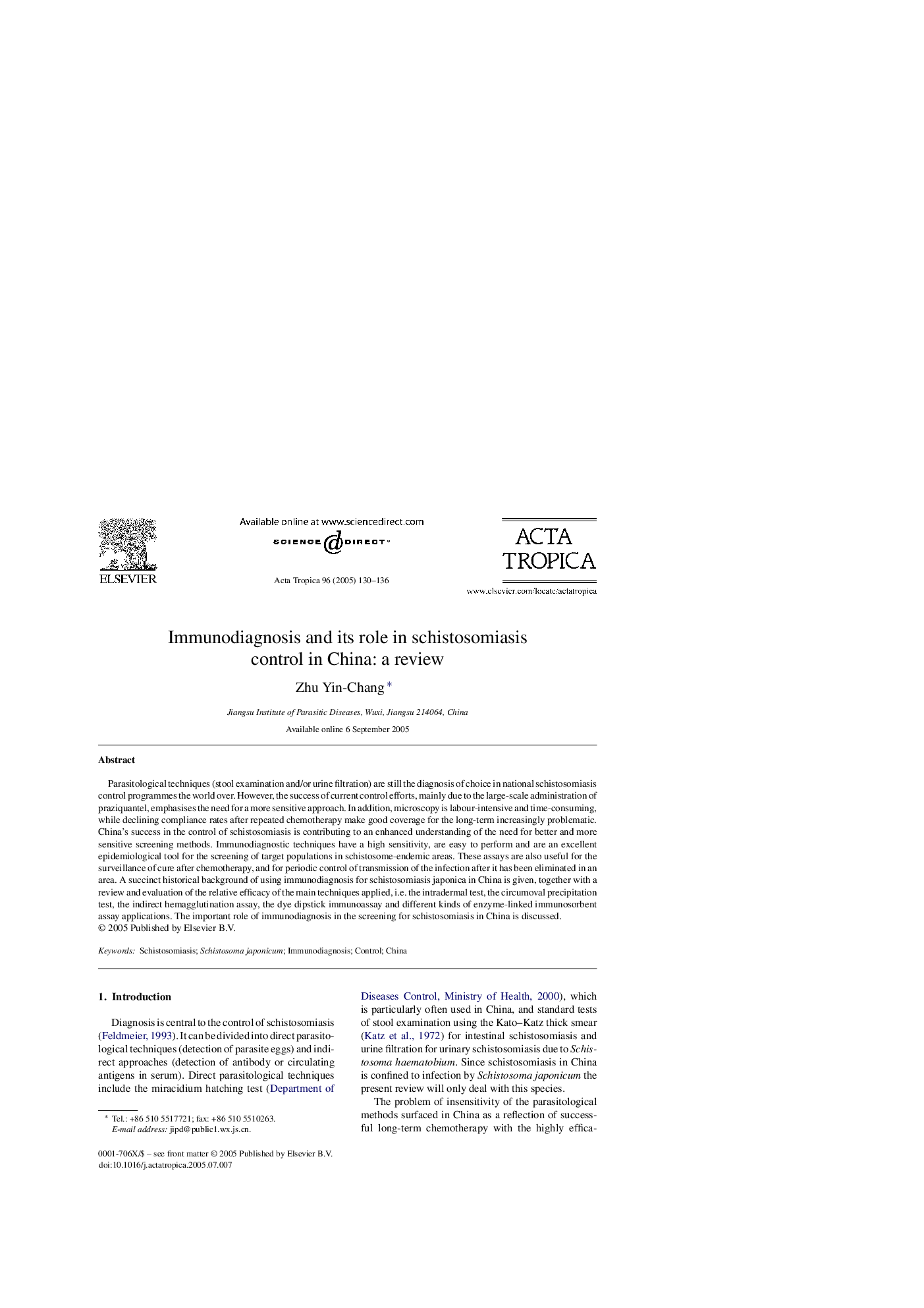| Article ID | Journal | Published Year | Pages | File Type |
|---|---|---|---|---|
| 9274236 | Acta Tropica | 2005 | 7 Pages |
Abstract
Parasitological techniques (stool examination and/or urine filtration) are still the diagnosis of choice in national schistosomiasis control programmes the world over. However, the success of current control efforts, mainly due to the large-scale administration of praziquantel, emphasises the need for a more sensitive approach. In addition, microscopy is labour-intensive and time-consuming, while declining compliance rates after repeated chemotherapy make good coverage for the long-term increasingly problematic. China's success in the control of schistosomiasis is contributing to an enhanced understanding of the need for better and more sensitive screening methods. Immunodiagnostic techniques have a high sensitivity, are easy to perform and are an excellent epidemiological tool for the screening of target populations in schistosome-endemic areas. These assays are also useful for the surveillance of cure after chemotherapy, and for periodic control of transmission of the infection after it has been eliminated in an area. A succinct historical background of using immunodiagnosis for schistosomiasis japonica in China is given, together with a review and evaluation of the relative efficacy of the main techniques applied, i.e. the intradermal test, the circumoval precipitation test, the indirect hemagglutination assay, the dye dipstick immunoassay and different kinds of enzyme-linked immunosorbent assay applications. The important role of immunodiagnosis in the screening for schistosomiasis in China is discussed.
Related Topics
Life Sciences
Immunology and Microbiology
Parasitology
Authors
Zhu Yin-Chang,
